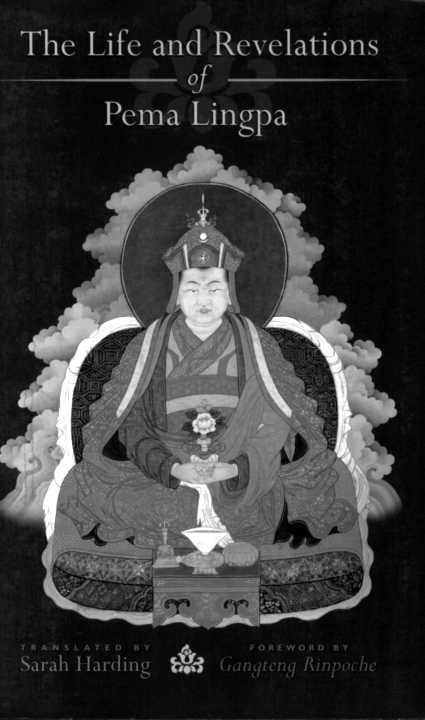





Translated by
Sarah Harding

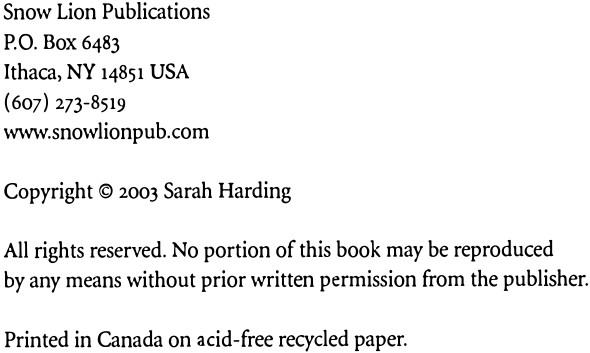



ix
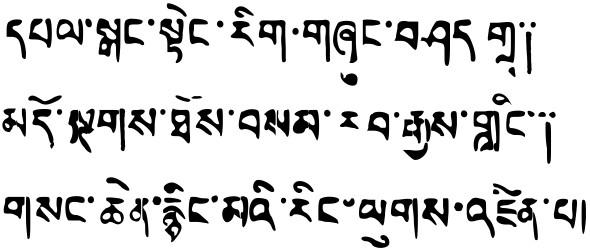

RIGZHUN( SHFDRA DONGAG - THOESAM -RABGAY- LING NYINGMAPA INSTITUTE
GANGTENG TRULKU RINPOCHEY



 HIS BOOK is an important introduction to Buddhism and to the teachings of Guru Padmasambhava. In particular, it includes selections from the treasures revealed by the great Bhutanese master Pema Lingpa. The history and dialogue with Princess Pemasal is the crux - that is where Guru Rinpoche gave a series of prophecies about the princess's future lives, which eventually led to Pema Lingpa's birth. This will be of benefit to anyone interested in the Dharma and those practicing in the Peling tradition.
HIS BOOK is an important introduction to Buddhism and to the teachings of Guru Padmasambhava. In particular, it includes selections from the treasures revealed by the great Bhutanese master Pema Lingpa. The history and dialogue with Princess Pemasal is the crux - that is where Guru Rinpoche gave a series of prophecies about the princess's future lives, which eventually led to Pema Lingpa's birth. This will be of benefit to anyone interested in the Dharma and those practicing in the Peling tradition.
These dialogues with female disciples offer inspiration to women practicing the Dharma today. People might think that women did not have the same opportunities or capacities for refining their beings and attaining enlightenment. These selections show that it makes absolutely no difference whether you are female or male; it is the practitioner's faith and diligence that determine spiritual progress.
I chose Lama Jewel Ocean to be translated first, because it contains important instructions for the spiritual path. These teachings concern Guru Padmasambhava and provide the foundation for later practices. Along with the Dzogchen and Great Compassion cycles, Lama Jewel Ocean is one of the most important in the Peling tradition. It is studied and practiced first because of the importance of the guru's blessing.
In order to translate these selections from Lama Jewel Ocean, I invited Sarah Harding, Kalu Rinpoche's student, to Bhutan for a year. It is difficult

GANGTENG GOBNPA, P.O. PHOBJIKHA, WANGDUEPHODRANG BHUTAN
to translate the Dharma, especially Vajrayana material. If someone has not practiced Vajrayana, the translation will not go well. I specifically asked Sarah Harding because she has completed extensive Vajrayana practice in a threeyear retreat.
His Majesty Jigmi Singye Wangchuck of Bhutan approved this project in order to share the Bhutanese tradition of Pema Lingpa. The translation of the history and teachings of this tradition into English will benefit not only Westerners but also the people of Bhutan and other places where knowledge of English is common. Since Pema Lingpa is so intertwined with Bhutanese culture, this book is also a way of preserving the cultural heritage of the Bhutanese people.
May these profound teachings of the Dharma contribute to peace and happiness on earth.


 RGYEN PEMA LING PA was a Buddhist saint who lived in Bhutan in the fifteenth century. He is a well-respected, prominent figure in the history of the Vajrayana tradition that dominates the Himalayan region, but it is especially in the small kingdom of Bhutan that he is loved as a folk hero and spiritual master, a source of national pride and inspiration. The stories still abound around the innumerable holy sites where he displayed spiritual wonders, and the drama of his extraordinary life is constantly reenacted in school plays and performances by monks throughout Bhutan. The teachings and religious practices are maintained in good health through his current incarnations, such as Gangteng Tulku Rinpoche. This living tradition is the link to deep spiritual roots, to the time when the great master Padmasambhava came to Bhutan and Tibet to tame the wild forces, bring the soothing wisdom of the Buddha's teachings, and leave behind an enduring legacy. The great Guru Rinpoche is said to have visited Bhutan three times, spreading the doctrine throughout the land and bestowing blessings that are still felt today. In particular, many of these spiritually ripening teachings were hidden in special power places throughout Bhutan and Tibet, to be revealed at the optimum time to be of maximum benefit for sentient beings in the future. It was Perna Lingpa who was destined to reveal many of these treasures.
RGYEN PEMA LING PA was a Buddhist saint who lived in Bhutan in the fifteenth century. He is a well-respected, prominent figure in the history of the Vajrayana tradition that dominates the Himalayan region, but it is especially in the small kingdom of Bhutan that he is loved as a folk hero and spiritual master, a source of national pride and inspiration. The stories still abound around the innumerable holy sites where he displayed spiritual wonders, and the drama of his extraordinary life is constantly reenacted in school plays and performances by monks throughout Bhutan. The teachings and religious practices are maintained in good health through his current incarnations, such as Gangteng Tulku Rinpoche. This living tradition is the link to deep spiritual roots, to the time when the great master Padmasambhava came to Bhutan and Tibet to tame the wild forces, bring the soothing wisdom of the Buddha's teachings, and leave behind an enduring legacy. The great Guru Rinpoche is said to have visited Bhutan three times, spreading the doctrine throughout the land and bestowing blessings that are still felt today. In particular, many of these spiritually ripening teachings were hidden in special power places throughout Bhutan and Tibet, to be revealed at the optimum time to be of maximum benefit for sentient beings in the future. It was Perna Lingpa who was destined to reveal many of these treasures.
The tradition of hiding treasures (terma)' is said to have originated with Padmasambhava in the eighth century, although it certainly had precedents in the legends of early Buddhism in India. Holy objects or scrolls of spiritual instructions were hidden in caves or cliffs, or sometimes the meaning of the teachings themselves was hidden in the very mindstreams of special disciples. The places and circumstances of their discovery are recorded in the form of prophecy in ancient texts attributed to Padmasambhava. The person who was the prophesied or destined revealer of a particular treasure is called the terton, the treasure-revealer. The collected literature attributed to this special class of Buddhist saints constitutes an enormous section of Tibetan scripture. It is the special domain of the Nyingma school, although not exclusively so. The terma tradition as a whole maintains the ever-important connection to the ancient teachings while at the same time ensuring that they are alive and current. In this sense, it is very much in keeping with the spirit of Buddhism, the ancient wisdom spoken by the Buddha over twenty-five hundred years ago that is constantly adapting and ultimately pragmatic.
Next page

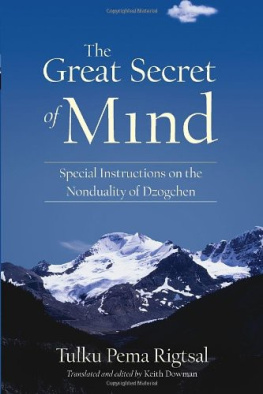
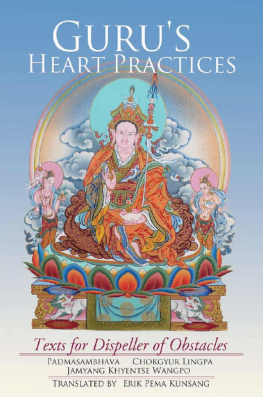
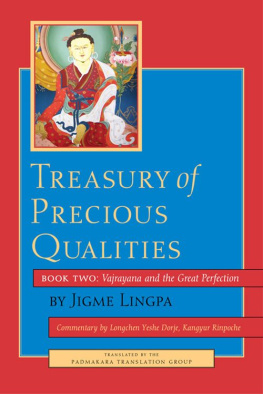

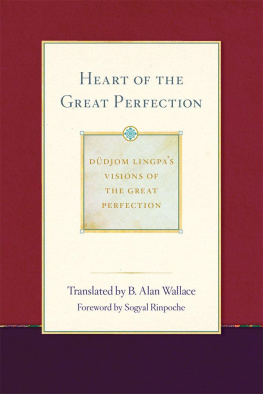
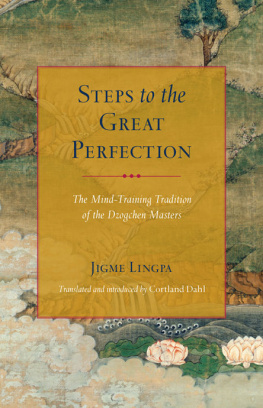
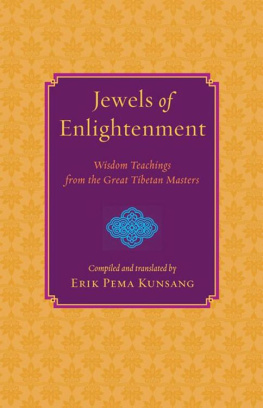
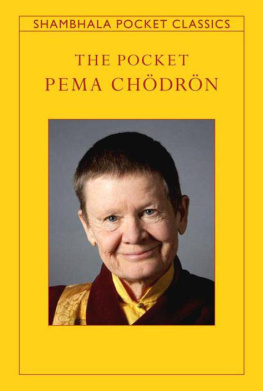
















 HIS BOOK is an important introduction to Buddhism and to the teachings of Guru Padmasambhava. In particular, it includes selections from the treasures revealed by the great Bhutanese master Pema Lingpa. The history and dialogue with Princess Pemasal is the crux - that is where Guru Rinpoche gave a series of prophecies about the princess's future lives, which eventually led to Pema Lingpa's birth. This will be of benefit to anyone interested in the Dharma and those practicing in the Peling tradition.
HIS BOOK is an important introduction to Buddhism and to the teachings of Guru Padmasambhava. In particular, it includes selections from the treasures revealed by the great Bhutanese master Pema Lingpa. The history and dialogue with Princess Pemasal is the crux - that is where Guru Rinpoche gave a series of prophecies about the princess's future lives, which eventually led to Pema Lingpa's birth. This will be of benefit to anyone interested in the Dharma and those practicing in the Peling tradition.


 RGYEN PEMA LING PA was a Buddhist saint who lived in Bhutan in the fifteenth century. He is a well-respected, prominent figure in the history of the Vajrayana tradition that dominates the Himalayan region, but it is especially in the small kingdom of Bhutan that he is loved as a folk hero and spiritual master, a source of national pride and inspiration. The stories still abound around the innumerable holy sites where he displayed spiritual wonders, and the drama of his extraordinary life is constantly reenacted in school plays and performances by monks throughout Bhutan. The teachings and religious practices are maintained in good health through his current incarnations, such as Gangteng Tulku Rinpoche. This living tradition is the link to deep spiritual roots, to the time when the great master Padmasambhava came to Bhutan and Tibet to tame the wild forces, bring the soothing wisdom of the Buddha's teachings, and leave behind an enduring legacy. The great Guru Rinpoche is said to have visited Bhutan three times, spreading the doctrine throughout the land and bestowing blessings that are still felt today. In particular, many of these spiritually ripening teachings were hidden in special power places throughout Bhutan and Tibet, to be revealed at the optimum time to be of maximum benefit for sentient beings in the future. It was Perna Lingpa who was destined to reveal many of these treasures.
RGYEN PEMA LING PA was a Buddhist saint who lived in Bhutan in the fifteenth century. He is a well-respected, prominent figure in the history of the Vajrayana tradition that dominates the Himalayan region, but it is especially in the small kingdom of Bhutan that he is loved as a folk hero and spiritual master, a source of national pride and inspiration. The stories still abound around the innumerable holy sites where he displayed spiritual wonders, and the drama of his extraordinary life is constantly reenacted in school plays and performances by monks throughout Bhutan. The teachings and religious practices are maintained in good health through his current incarnations, such as Gangteng Tulku Rinpoche. This living tradition is the link to deep spiritual roots, to the time when the great master Padmasambhava came to Bhutan and Tibet to tame the wild forces, bring the soothing wisdom of the Buddha's teachings, and leave behind an enduring legacy. The great Guru Rinpoche is said to have visited Bhutan three times, spreading the doctrine throughout the land and bestowing blessings that are still felt today. In particular, many of these spiritually ripening teachings were hidden in special power places throughout Bhutan and Tibet, to be revealed at the optimum time to be of maximum benefit for sentient beings in the future. It was Perna Lingpa who was destined to reveal many of these treasures.